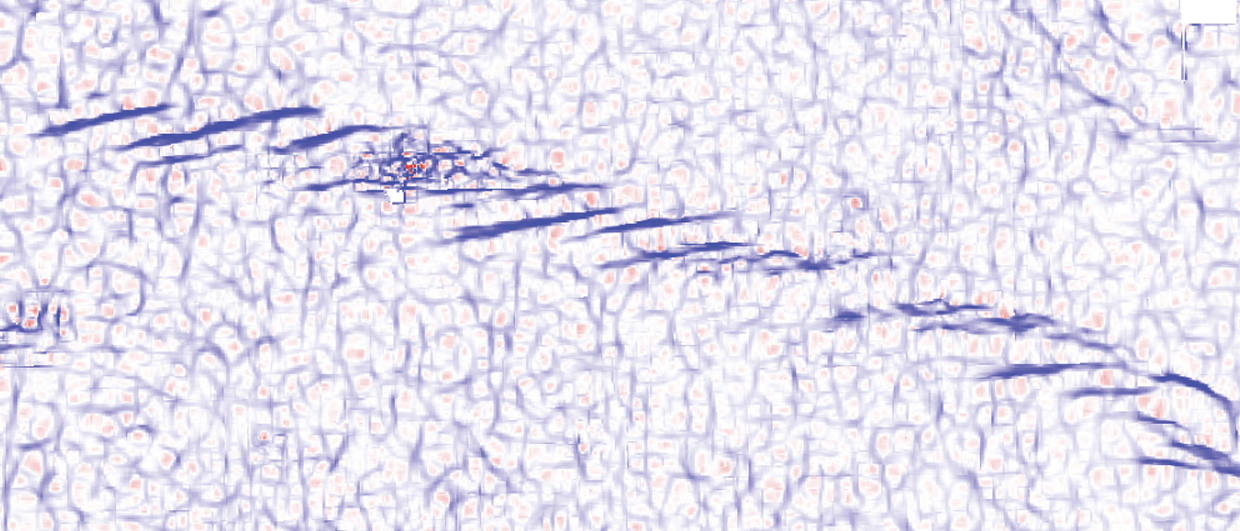Riedel shears are commonly the first set of subsidiary faults we see prior to the breakthrough of a master fault. They form systematically at an acute angle (~10-20°) to the main fault in an en echelon pattern. Although they are commonly mentioned when discussing strike-slip tectonics, Riedel shears also develop along normal faults and reverse faults. However, we commonly refer to them as the synthetic or antithetic sets in those cases.
It can often be difficult to determine the sense of slip along a strike-slip fault in the subsurface due to a lack of piercing points. Additionally, it may be difficult to determine slip sense at an outcrop that lacks bedding, such as a homogenous granite. However, the Riedel shears are great for determining
slip sense, regardless of piercing points.

The trick
One trick to determining the sense of slip using Riedel shears is to draw a line through the en echelon set of faults that develop prior to fault breakthrough. The acute angle between the Riedel shears and the line you drew – which would represent the master fault – creates an arrow shape that “points” in the direction of slip. This can be done on an outcrop or on a seismic time slice.
Since Riedel shears also commonly have a sense of normal slip associated with them, they can often be resolved on 3D seismic data. The illustration shows a time slice through a left-lateral strike-slip fault where an en echelon pattern of Riedel shears can be observed. The cross-section shows the slight normal slip along one of these faults. Furthermore, Riedel shears will have the same sense of slip as the master fault. Anti-Riedel shears, however, will have the opposite sense of slip.
Riedel shears can occur at a variety of scales but it should be noted that they are subsidiary faults to a master fault and should not be used to describe regional fault patterns that occur at various orientations. This means that the timing of the Riedels will be the same as the master fault. Too often, geoscientists will see regional fault patterns at various orientations and apply a “Riedel model”, but this is incorrect to the true meaning of the word and why it’s also important to understand the tectonic history.

